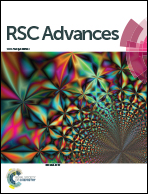A facilely fabricated in vivo hypertrophic scar model through continuous gradient elastic tension
Abstract
The role of mechanical force is increasingly being recognized in the pathophysiology of hypertrophic scars (HScs). Many mechanically loaded scar models have been used to study the HScs formation mechanism. However, current load models are either too complicated or non-economical. Furthermore, the impact of different mechanical loading modes on different phases of HScs formation remains unknown. In this study, a facile, reproducible, and economical rat HScs model was successfully fabricated, driven through elastic tension. The study of three types of elastic tension showed that early elastic tension during wound healing can only lead to narrow linear scar formation, later gradient elastic tension during wound healing results in narrow HScs formation, while continuous gradient elastic tension during wound healing can induce the true wide HScs formation. Macromorphological features were observed, which showed that the resulting true wide HScs mimic well the pathological process of human HScs. The histopathological study demonstrated that the HScs in rats are similar to human HScs, with dramatic increases in scar width (26-fold, by week 8) compared to the control group, a thickened epidermis, overabundant extracellular matrix deposition, augmented neovascularization and increased TGF-β1 expression, which are all typical characteristics of human HScs. Hence, we concluded that a facile and reproducible rat HScs model can be constructed through continuous gradient elastic tension. This new rat scar model is an easily fabricated model that can be used for systematically studying HScs. Tension contributed to scar formation in all phases of wound healing. Continuous gradient elastic tension can induce wider hypertrophic scar formation than early elastic tension and later gradient elastic tension.


 Please wait while we load your content...
Please wait while we load your content...